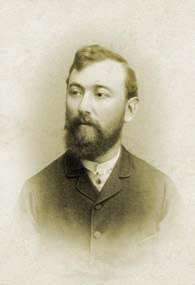Felix Milleker

Felix Milleker (Serbian-Cyrillic: Феликс Милекер, Serbian-Latin: Feliks Mileker, Hungarian: Felix Mileker, pronounced Feliksz Mileker; 14 January 1858, Vršac, Voivodeship of Serbia and Banat of Temeschwar, Austrian Empire – 25 April 1942, Vršac, Autonomous Banat of Serbia) was a Serbian pedagogue and historiographer of local history of Banat, who spent the most time of his life in his native region, named as Temes county, Torontalsko-Tamiške županja, Podunavske oblast and Danube banovina during several decades.
Life and work
Felix Milleker was the son of a German smith’s family of Danube Swabian origin in Vršac. He attended the primary school as well as the secondary school in his birth place and then he studied at pedagogical school of education in Szeged. In 1876, he graduated the qualification examination for teaching at primary schools and gained first professional experience at a school there. In 1878, he began teaching at a school in Bela Crkva, and then he changed to a school of Vršac, where he worked from 1883 to 1925 until retirement.
Milleker was interested in local history and culture and during leisure time that intellectual hobby became main emphasis of his social life. In 1894, he became appointed curator and first director of the City Museum of Vršac and Milleker sought and collected historical artifacts of regional history for creating a permanent exhibition at museum and he wrote numerous monographs on regional history in more than fifty years, many of which were published by him as editor-in-chief of the Banater Bücherei (German: Banat’s Library).

Milleker’s publications contain ideological attitudes of his time reflecting a shaken and uncertain identity of a contemporary German influenced by fundamental political changes of his present. An example is the matter of fact which can be found in his monograph on the history of the City of Pančevo from 1925 which includes a genesis of the oldest Catholic sacral building in town with distorted chronology of facts. In the same work he made the drop of a hint about an antijudaistic event in town which happened a few decades later in the same century. But the irrational base of that event was already brief mentioned by him in his manipulated history of sacral building. The motivation of this event was the disappearance of a female teenager and some Catholic residents accused the Jewish community of being responsible. Among some prejudices against Jews was the allusion that they were trying to defile Christian women (rape, human sacrifice) and Milleker used this metaphor in the history of the building – a not mentioned column with a statue of Abraham and Isaac (built in 1768) became the great steeple in his history. That historiographical work documents fateful opinions of German minority which were based on Catholicism, German and Hungarian nationalism (Austria-Hungary) and points of view of a fundamental superiority of German culture of these times. Nevertheless, the City Museum of Vršac is an important and recognized institution of cultural heritage in southern part of Vojvodina in Serbia.[1][2][3]
Bibliography (selection)
- Die Besiedlung der Banater Militärgrenze (The Settlement of Banat Military Frontier), Bela Crkva 1926.
- Das Banat und die serbische Kultur (The Banat and Serbian Culture), Vršac 1938.
- Der Anfang der Einwanderung der Deutschen ins Banat, 1716-1722 (Starting of German Immigration into the Banat, 1716-1722), Vršac 1939.
- Das Hakenkreuz im Banat in den ältesten Zeiten (German: Hooks Cross in Banat in the Oldest Times), Vršac 1941.[4][5]
References
- ↑ Biography on the Official Website by City Museum Vršac, Retrieved on 2017-05-27.
- ↑ Biography (PDF) in Austrian Biographical Lexicon 1815 – 1950, p. 300, published by Austrian Academy of Sciences, Retrieved on 2017-05-27.
- ↑ Felix Milleker, Geschichte der Stadt Pančevo, Pančevo 1925, p. 26, 31, 45, 90 and 93.
- ↑ Felix Milleker in catalogue of National Library of Serbia
- ↑ Felix Milleker in catalogue of Austrian National Library